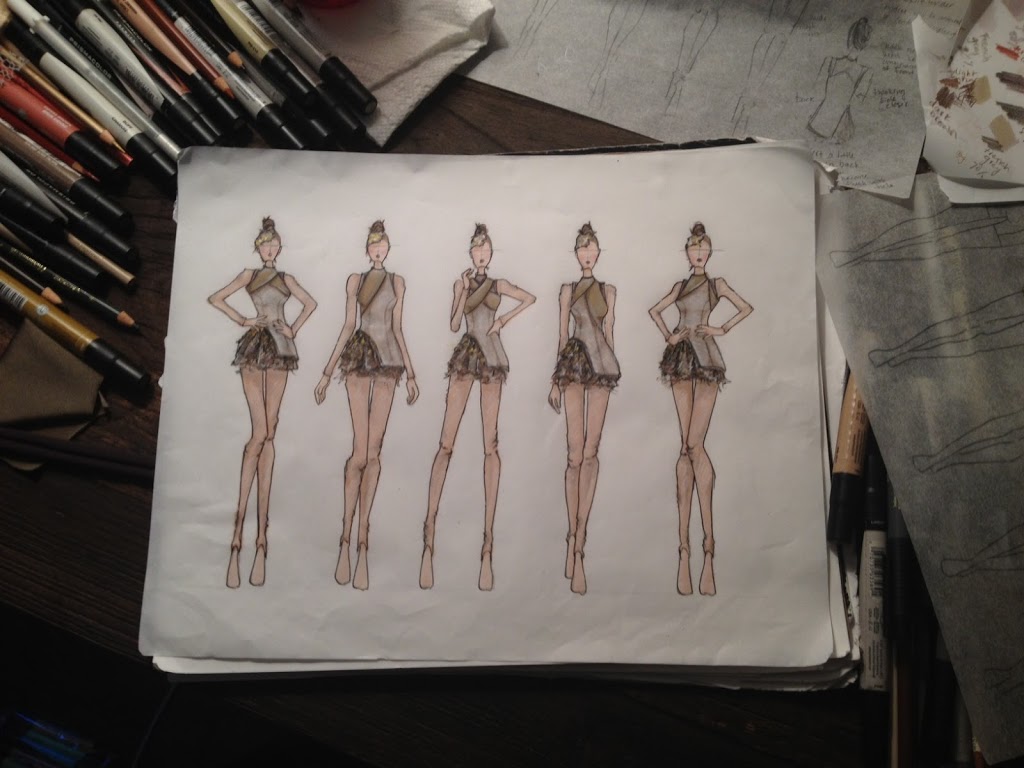Let’s talk a little about your creative process. What is the impetus for this work?
My inspiration for this piece is the recent passing of a family friend. It started as a story ballet of sorts, with a clear narrative element. As I choreographed it became a healing process — my own personal way of putting beauty back into the world after seeing such suffering. His passing is central to my work and that’s reflected in the title of the ballet; it’s really about being lost in the light he created — a tribute to the good that someone left behind.
Tell us a little about the artists you are collaborating with — your costume designer and composer.
[Costume Designer] Alexis Mondragon is actually my best friend. We’ve known each other since we were 11. We met when we both played Clara for Ballet Arizona when we were young. She’s also a very talented dancer, but her primary passion is fashion design. She went on to study at the School of the Art Institute in Chicago, receiving the Nick Cave Award. It’s great because she knows about dance and how to costume for movement, plus her designs are just beautiful. I’m very excited to work with her.
[Composer] Dan Coleman and I met through a mutual friend. I was telling my friend about my piece, and she recommended I connect with Dan and gave me his number. We talked over the phone and I just knew I wanted to work with him. What we’ve done is take three of his pre-existing, unrelated compositions and combined them into one master piece. His music is very moving and I’m honored to have his score for my ballet.
What has been your biggest challenge with this piece so far?
My biggest challenge has been using a new musical composition. Some parts of the pre-existing music had been recorded during concerts and I was able to choreograph to those recordings. However, once I had used that up, I had to go on without music while I waited for the rest of the score to be completed. Now that the composition is finished I’m working on pairing down some of the moment and refining the transitions between the three sections.
Are there choreographers you particularly respect or find inspiring?
I’ve really been feeling that this work is an homage to Antony Tudor, so that’s been my focus. He’s such an emotional choreographer; his work has such sensitivity to it, without always needing or using a strong narrative. I did my first Tudor ballet when I was still in high school. It’s the most graceful I’ve ever felt as a dancer. I sometimes feel that Tudor’s choreographic language has been lost in recent years and for me this is one opportunity to bring it back. His aesthetic holds a large dose of humanity, which is tremendously important to me as a choreographer, and is a reminder of how glorious it can be to be a ballet dancer. I hope my work will allow the dancers in my own ballet to feel their most beautiful, as Mr. Tudor’s work did for me. I decided against the Marco & Victor bit because I don’t want to risk sounding insulting to them.
How do you see yourself as a choreographer?
PNB does works by the greatest choreographers in the world. To have my work presented on this scale at the age of 23, being asked to create a ballet for the Company at this stage in my career, was completely unexpected. It’s pushing me to really think of myself as a dancer and choreographer sooner than I thought. I always thought, “I would really love to choreograph one day”…and one day came really soon!
What are your goals for this piece and then what’s next for you?
I’d be happy to take on most choreographic projects that come my way. I’m really driven based on the dancers I’m working with — hungry dancers that want to grow artistically. That’s why I enjoyed choreographing for the PNB students so much in previous years. I want this piece to highlight human connection and to celebrate the elegance of this wonderful ballet company. My main goal, however, is for this to be a great experience for all the hard-working people involved and to use the opportunity myself to grow as an artist and choreographer. I want to provide a beautiful vehicle for my fellow dancers that will showcase their talents and grace. I also hope that the audience will feel uplifted. I needed grace in my life — that’s really what this piece is about.

Alexis Mondragón bio:
Alexis Mondragón grew up in Tucson, AZ. Due to her ballet background, she was surrounded by the arts. While training for a career in ballet, she had the opportunity to design costumes for Tucson Regional Ballet and Urban Ballet Theater in New York City. It was from that experience that she decided to pursue a career in design. She then attended The School of the Art Institute of Chicago, where she earned a Bachelor of Fine Arts in fashion design and construction in 2010. Upon graduating, Ms. Mondragón received the Nick Cave Award and a fellowship with The School of the Art Institute of Chicago to work on another collection for the school’s fashion show in May 2011. She now resides in New York City, where she works in the fashion industry and freelances as a designer.
Featured photo: Margaret Mullin in rehearsal, photo © Rex Tranter.





